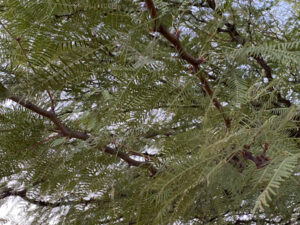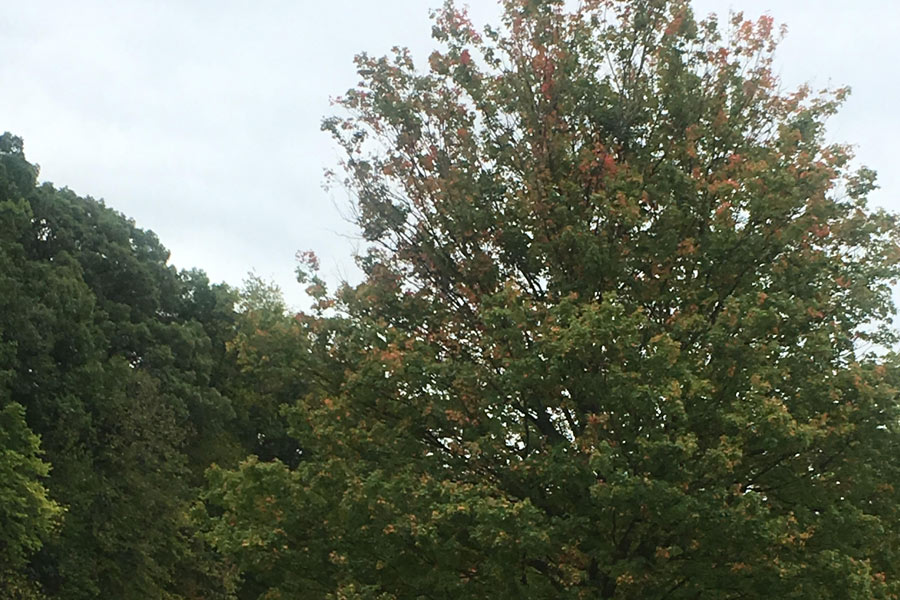When I need an ocean fix, I head to the warm waters of the Gulf of Mexico. But when I need a green fix, I head back to my hometown of Peoria, IL. I call it my writing retreat because I sit on my cousin’s back porch, where my muse refreshes and my writing output increases. Having his two dogs draped on the furniture around me helps with the inspiration. I often take his Goldendoodle for a walk around the tree-filled neighborhood, to get some exercise and increase blood flow to my brain. After living in the Sonoran Desert for over a decade, the trees strike me as so…green! The trees are tall with thick branches and really big leaves! Why such a big difference in the flora? I’m glad you asked.
Small vs. Big Leaves
I’ve become used to the small, thin leaves of the desert trees. Their short stature, their thin branches, and the sight of the landscape through the leafy sparseness are what I now expect. This is a mesquite tree, common in the Sonoran Desert.

The significant differences between the leaves got me thinking about how the tree species have adapted to their environments. Desert tree leaves are small to reduce surface area thereby decreasing water loss. Access to water is limited in desert environments. In the Midwest, water conservation is less of an issue for the trees. They have leaves with lots of surface area. It’s interesting that leaves that grow in the shade (all those leaves produce a great deal of shade) are usually bigger. They need a greater surface area to increase their amount of photosynthesis. The leaves exposed to the sun can be smaller. No need for them to fight over the sunshine.
Some of the more common Midwest trees are the oaks. The average oak leaf can be up to eight inches in length. This is huge compared to the palo verde or mesquite leaves which have leaflets about an inch long. In addition, the oak leaves are present from spring until fall, since they are deciduous, drop off for winter. In comparison, the desert trees’ leaves tend to show up after rainfall.
The leaves are responsible for feeding the trees. Photosynthesis is where sunlight is used to synthesize carbon dioxide and water into food for plants. Oxygen is given off as a byproduct, fortunately for us oxygen breathers.
A Whole New Tree-preciation
I must confess, living in the desert has made me appreciate trees more than I need, as a once native Midwesterner. Sure, I knew they were important and beautiful, but I usually appreciated it when they bloomed in the spring or changed colors in the fall. Now, I more fully realize how critical they are to life in any environment. Animals and other plants really depend on their presence to survive.
If you want to know more about the plants in the Sonoran Desert, I offer a bit of information in How Not to Photograph a Hummingbird.

